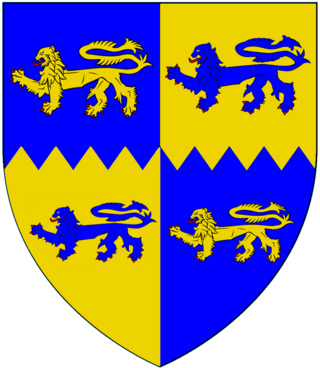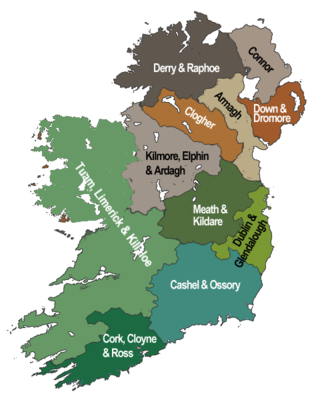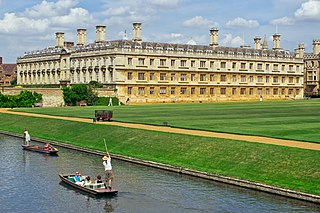Related Research Articles

Sir William Butts was a member of King Henry VIII of England's court and was the King's physician.
John Raphael Rodrigues Brandon was a British Gothic Revival architect and architectural writer, much of whose work was done in collaboration with his brother Joshua, until the latter's death in 1847.
Dr. Calybute Downing (1605–1643) was an English clergyman, a member of the Westminster Assembly. Also a civil lawyer, he is now remembered for political views, which moved from an absolutist position in the 1630s to a justification of resistance to authority by 1640, within a contractarian setting.

Edward Cromwell, 3rd Baron Cromwell was an English peer. He was the son of Henry Cromwell, 2nd Baron Cromwell by his wife Mary, daughter of John Paulet, 2nd Marquess of Winchester and his first wife Elizabeth Willoughby. His grandfather, Gregory, son of Thomas Cromwell, chief minister to Henry VIII, was created Baron Cromwell on 18 December 1540.
John Baker, D.D., was an English academic, vice-master of Trinity College, Cambridge.
John Venn was a priest of the Church of England who was a central figure of the group of religious philanthropists known as the Clapham Sect.

The Belstead Brook Hotel in Ipswich, Suffolk is a building of historical significance. It was originally a 16th-century hunting lodge but was used later as a family residence. The property was then converted to a hotel which now provides accommodation and restaurant facilities. It also caters for special events particularly weddings.

The Archdeacon of Aghadoe was a senior ecclesiastical officer within the Anglican Diocese of Limerick, Ardfert and Aghadoe from the mid thirteenth century to the early 20th. As such he was responsible for the disciplinary supervision of the clergy within his part of the Diocese of Ardfert ; and then the combined diocese of Limerick, Ardfert and Aghadoe.
Robert Gregg Bury was an Irish clergyman, classicist, philologist, and a translator of the works of Plato and Sextus Empiricus into English.

The Church of St Luke, High Orchard, Gloucester, was a Church of England church built and endowed by the Reverend Samuel Lysons, rector of Rodmarton, who was also the first minister.
John Baron, D.D. was an Anglican priest in the eighteenth century.
Edward Mellish was an Anglican priest in the late 18th and early 19th centuries.
John Warren (1767-1838) was Dean of Bangor from 1793 to 1838.
Thomas Charles Geldart, LL.D was a lawyer and academic in the nineteenth century.
William Webb, D.D. was Master of Clare College from 1815 until his death.
John Jaumard was Anglican priest in Ireland in the mid 18th century.
Clement Breton D.D. was an English priest in the 17th century.
Toby Henshaw was the Archdeacon of Lewes from 1670 until his death in 1681.

Benjamin Pulleyne, sometimes speltPullan, was a mathematician, Church of England clergyman, fellow of Clare College, Cambridge, and schoolmaster. For almost fifty years he was the Master of Gresham's School, then usually known as Holt Grammar School.
Lambrocus Thomas was a Welsh clergyman who served as Canon Chancellor and Dean of Chichester Cathedral.
References
- ↑ The Gentleman's Magazine, and Historical Chronicle, Volume 95, Part 1 p475:
- ↑ Alumni Cantabrigienses: A Biographical List of All Known Students, Graduates and Holders of Office at the University of Cambridge, from the Earliest Times to 1900, John Venn/John Archibald Venn Cambridge University Press > (10 volumes 1922 to 1953) Part II. 1752-1900 Vol. vi. Square – Zupitza, (1954) p344
- ↑ "Fasti Ecclesiae Hibernicae: The succession of the prelates Volume 1" Cotton, H. p507 Dublin, Hodges & Smith, 1848–1878
- ↑ London Gazette See his obituary in the Gentleman's Magazine, Vol.42, July–December 1854, London, 1854, pp.626-7
- ↑ See imageFile:All Saints church Dickleburgh Norfolk (432485293).jpg